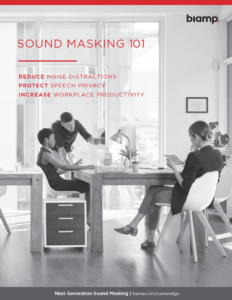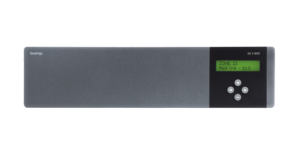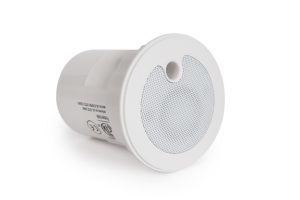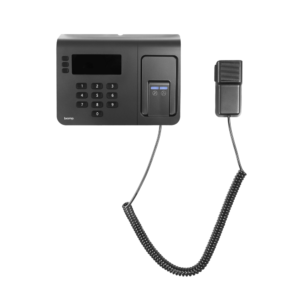In case you missed it, Mashable did a cool story last month on how noise distractions due to open office layouts (cube farms, dogbone tables, etc.) are the number one complaint amongst cubicle workers and that they also decrease worker productivity.
The article provides some common sense solutions on how to reduce noise distractions when you’re working (working offsite, turning a conference room into a quiet zone, using noise canceling headphones), but ignores one of the best solutions – sound masking.
What is sound masking? I just started working here at Cambridge Sound Management a couple of weeks ago, and must admit, prior to coming here I had never heard of sound masking. I didn’t really grasp how QtPro™ worked until I actually saw it in action at the office (as you might imagine, Cambridge Sound has its’ QtPro Sound Masking system installed here). In essence, small speakers (called emitters) emit ambient noise into the office space. The noise emitted kind of sounds like air conditioning, but you don’t really notice it unless you’re specifically listening for it.
In my last job, I had a private office and here I have a cube (my old company had a glut of office spaces and my new one a distinct shortage – alas). My current cube is WAY QUIETER than my old office. I heard every conversation, every cough, and every sneeze in the cubes outside. The office walls were thin (and let’s face it, they are probably thin in most office environments) and you could hear other co-worker’s conversations right through them.
One day someone who reported to me (let’s call her Cindy) used the office next to mine to do a job interview over the phone. I heard every word of it through the walls (I wasn’t eavesdropping, I promise). Learning that she was interviewing was useful information for me, because I learned we’d probably need to hire a new marketing assistant soon. Cindy, however, was pretty embarrassed when I told her I overheard her conversation (you might ask why I told her, and honestly, I can’t remember). Sound masking would have prevented this situation from ever occurring (don’t worry, Cindy got the job she was interviewing for and everyone lived happily ever after).
It’s not like I can’t hear anything in my new office and am in the old “cone of silence” from Get Smart. (If you think about it, being in a completely silent office would probably be worse than one that was too noisy – it would feel like you were in solitary confinement). Instead, I can hear the people in the cubes around me (which is good, because otherwise, I wouldn’t be able to ask them questions) but sounds and voices from other cubes are pretty faint. You can hear them, but they’re not really loud enough to be distracting. Plus, you can’t really make out what people who aren’t in your immediate vicinity are saying – the sound masking makes it hard to make out individual words.
And in case you’re wondering, you can’t hear anyone who’s in an office once they shut their door — I bet Cindy would appreciate that.






